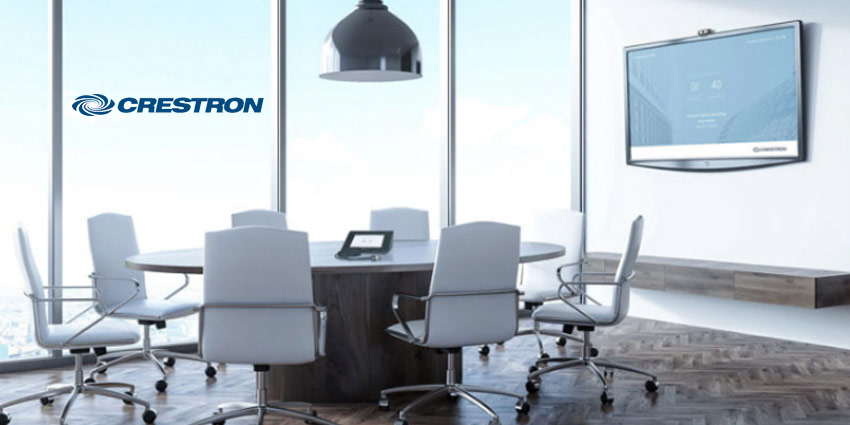Over time, the modern workplace has benefited from incremental innovations. The creation of flexible workspaces with scalable technologies is extremely valuable in today’s office buildings. Analytics, AI integration, and sensors once functioned as independent tools but now operate in concert as part of an evolved UC strategy. A growing number of office buildings will soon utilise various types of sensors that will tie into services that use AI and analytics to provide data to inform decisions. The original use case for these sensors – usage data, maintenance scheduling, data-driven technology investment – will be critical during the pandemic to avoid needless personnel contact for maintenance and cleaning. During the transition to re-entry, this information will provide insight into worker habits to create smarter work schedules and ensure limited company resources for real estate and technology are disseminated responsibly. Crestron has been at the forefront of advanced technology for automation systems that reinvents the way people live and work. In a post-COVID world, companies need an intelligently integrated strategy as they plan for workplace success.
UX and Workflows for a Modern Workplace
Crestron’s Director of Product Strategy-UC, Joseph Sarrasin, elaborates on how sensors are part of UC planning,
“You have sensors and devices that are gathering analytics and data to understand how people are interacting with technology and each other. That data is used to create an improved working experience”

“You take advantage of the fact that most meeting rooms that employ collaboration technology can track when people join a meeting, when they join a meeting, how many joined remotely versus in-person.” This level of integrated technology leads to timely applications such as allowing a reasonable and safe return to in-office work. With the ability to track people in a space, adherence to the recommended amount of people or safe distancing in a space becomes effortless. With enough technology pieces and data points, companies can start to use AI to make informed decisions about the workplace’s operation/functionality.
Internally, Crestron uses the technologies and components they manufacture to drive decision making. They validate the methods that help increase the understanding of the organisational operation, the most efficient use of spaces, and the creation of intelligent facility/usage plans. “We have approximately 25% of employees back in the office, but because of the data we’ve gathered, we know there’s a need to accelerate all of our spaces to be collaboration spaces so everyone can function as a first-class meeting participant,” explains Sarrasin. “Also, our facility and IT teams can use these new data collection tools, such as predictive analytics and AI, to understand how people are interacting with specific spaces to push improvements for those spaces so they can be of a better use for everyone.” Just two years ago, remote meetings were commonly thought of as people joining a conference bridge with limited interaction. Now the technology exists to provide enhanced collaboration with a tremendous end-user experience.
Automation Enabled by APIs
Crestron has implemented APIs to automate data extrapolation from sensors in two significant ways –data mining and deployment and space management. The more APIs integrate with devices; the easier products are deployed with automated functionality. This can include testing and updates or health checks on spaces without exposing the end-user in a way that results in downtime. If an issue is reported automatically and fixed in a transparent way for end-users, it benefits everyone. Sarrasin states:
“We’re huge on zero-touch deployment; the idea when you take a new device out of the box all of the provisioning has been down ahead of time so when you plug it in it’s ready to go”
“The more you can understand how people are using technology, the more you eliminate the guesswork from IT solutions. IT budgets then become more strategic, and the organisation as a whole gets a bigger bang for its buck from the tools they implement because the data shows what works and what doesn’t.” A good example is when heat mapping is implemented to understand if the size of a monitor is appropriate for the space. If sensors show that everyone is huddled together in one area, the likely problem is that the presented material is not visible and a larger screen is required for collaboration. Regardless of the cause of the problem, this kind of data mining allows for recognition that a problem exists, at which point the cause can be identified, and troubleshooting can begin.
Crestron is leading a lot of the efforts that reinvent office spaces while working with the two biggest organisations in the UC space. As a result, they are ahead of the curve for unifying analytics, sensors, scheduling, and meeting room automation. 2020 has provided a significant push for companies to adopt a smart workplace infrastructure to facilitate all parts of the business in a way that will protect against any global circumstance. Crestron has the roadmaps to future-proof organisations today, so they don’t have to wait for tomorrow.







